West Wing, Manadon House / Apron ~ Plymouth.
Client : Private.

The present Grade II listed Manadon House was built as a country house in 1681 A.D. Having been re-modelled on a previous house here on the site, there are features within this building that date back even earlier to the 1500’s. In 1940 the R.N.E.C. (Royal Naval Engineering College) acquired the site and constructed new buildings to train their officers and in 1946 it was named H.M.S. Thunderer. The house then became the home of the Admiral. The Navy left in 1995 and the grounds were sold off to create new housing. The Admirals house was sold to developers and converted into three separate dwellings. The West Wing forms part of that conversion and is Grade II listed.
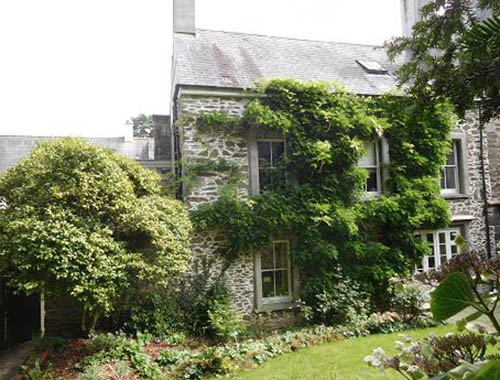
We had already built a new entrance for this property, then we were asked to reconstruct an apron leading into a shared parking area. The present apron had seen much better days. The concrete was failing and the ground was wearing away making it difficult to drive across into the parking area.
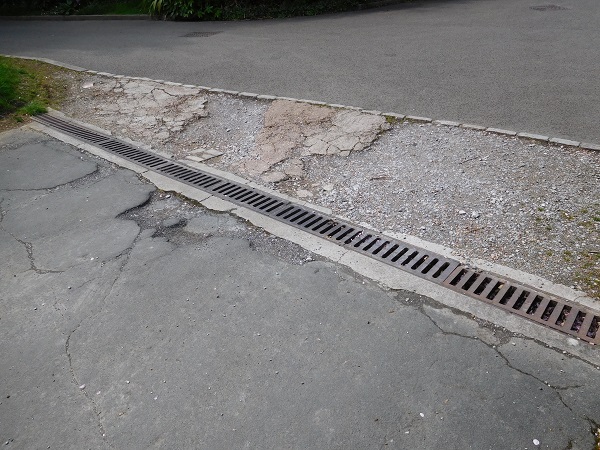
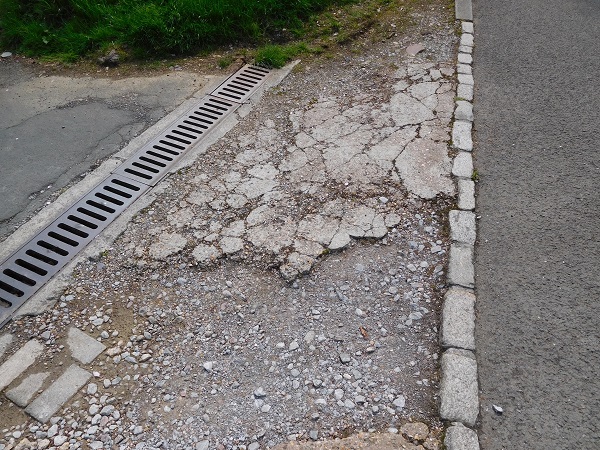
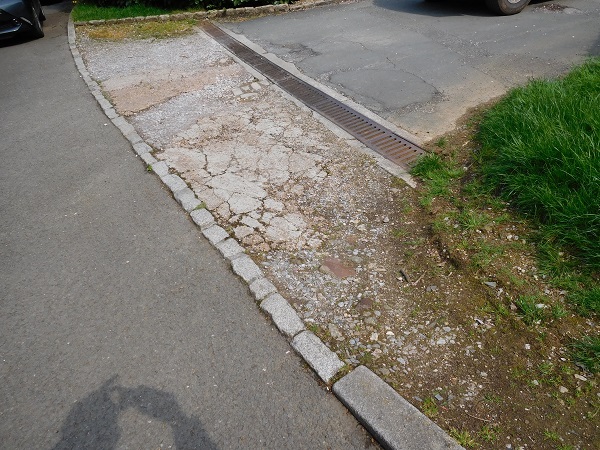
It was decided that the old concrete would be removed and be replaced with granite setts. The old concrete was taken out and the ground dug down to the required depth to take the new setts. The first thing we did was set in a double row of granite setts to form a border. The setts varied in sizes ranging from two to three inch cube on average and we had two different colours which were silver grey and pink. The border consisted of a row of the silver setts and a row of the pink.
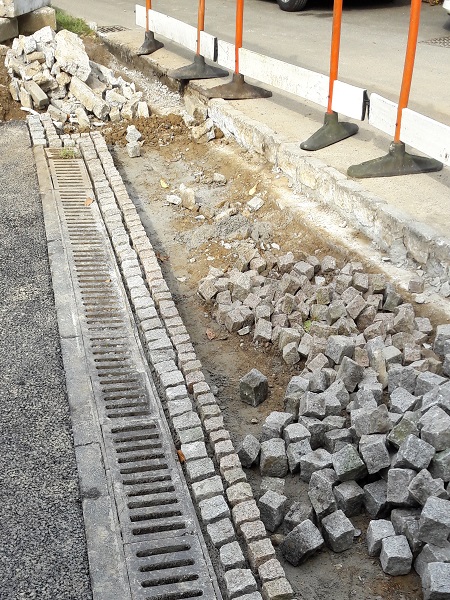
From this border we set out the pattern for the apron. The granite setts were going to be laid in an interlocking fan pattern and the silver setts were used for this.
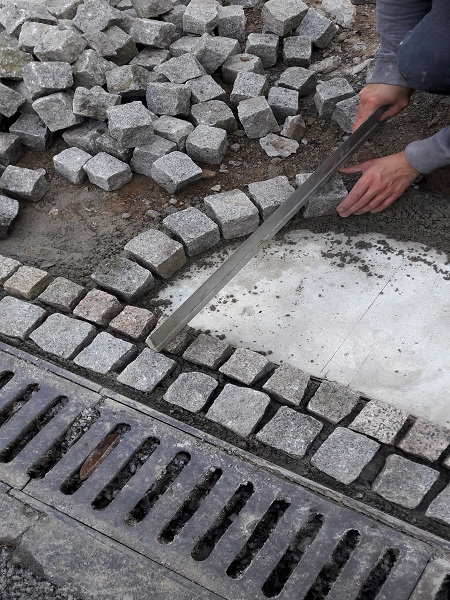
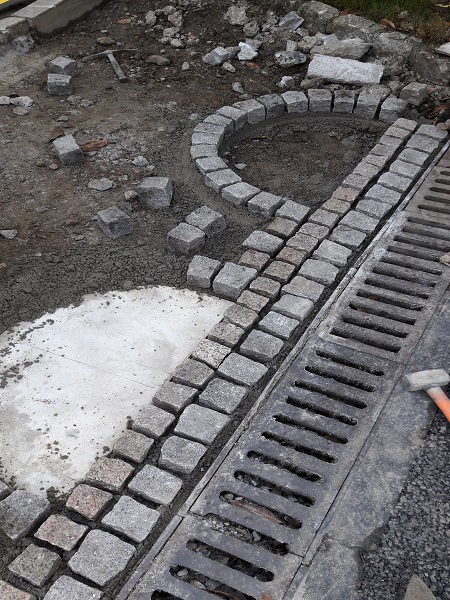
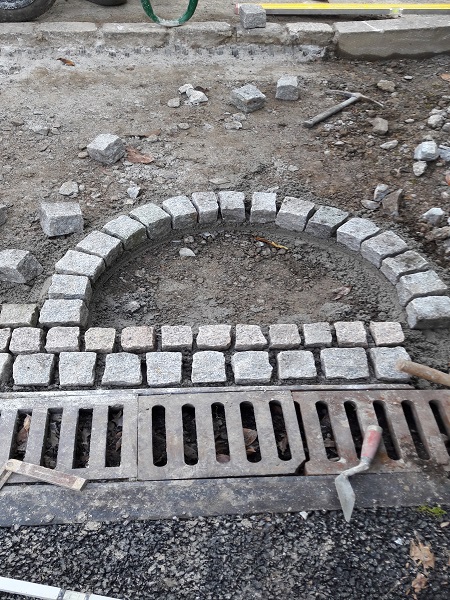
Once the initial arcs were set out we proceeded to fill them in. Each interlocking fan was bordered with the pink setts.

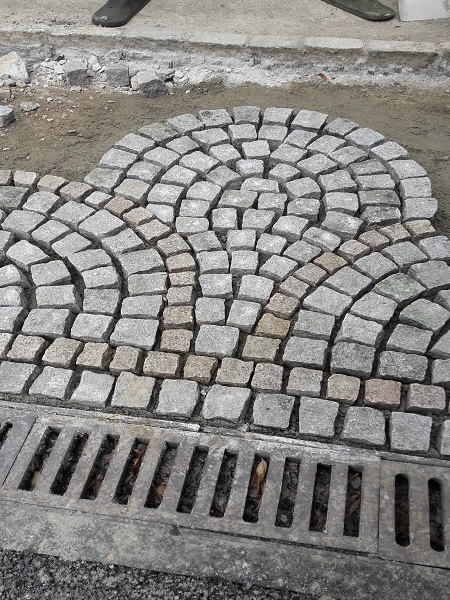
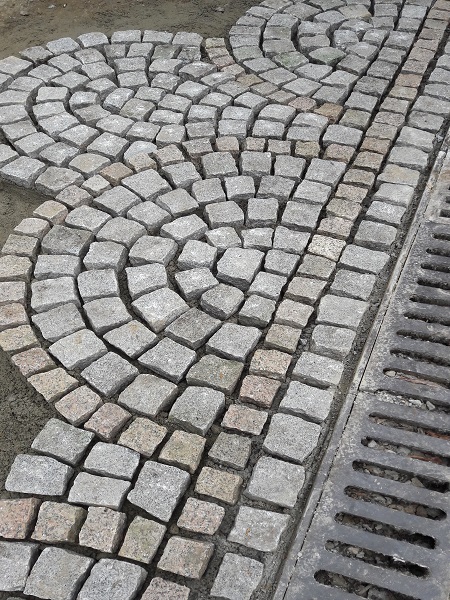

It wasn’t long before the pattern was completely laid. The setts are laid on a continuous sand and cement bed using coarse sand. The depth of the bed is about four inches thick giving the apron, including the setts, an overall thickness of about seven to eight inches.
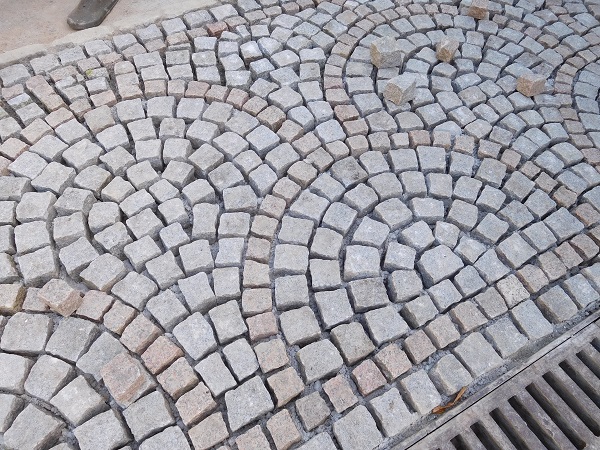
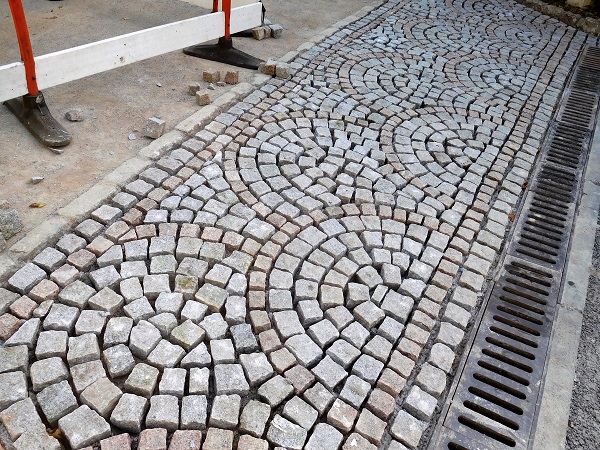
Once the setts were laid it was all pointed using a sand and cement mortar and tooled in with a half round jointing iron.
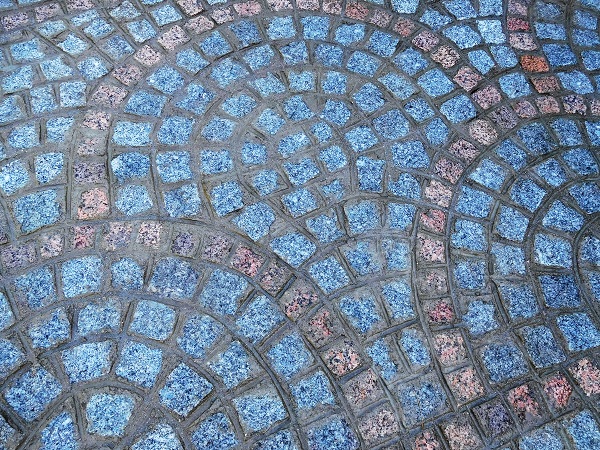
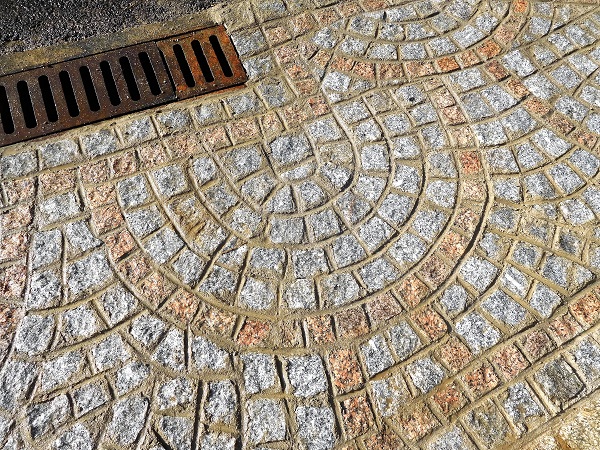
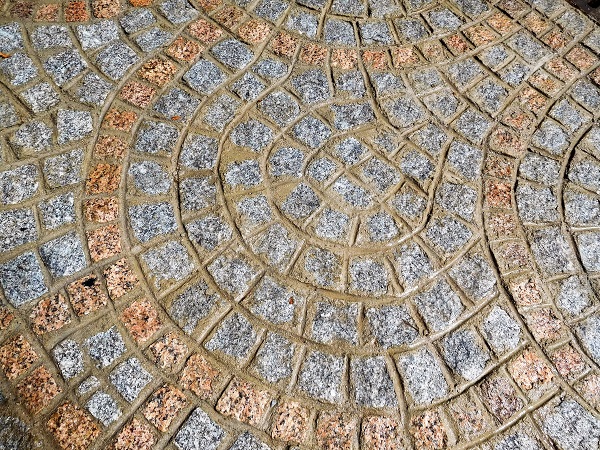
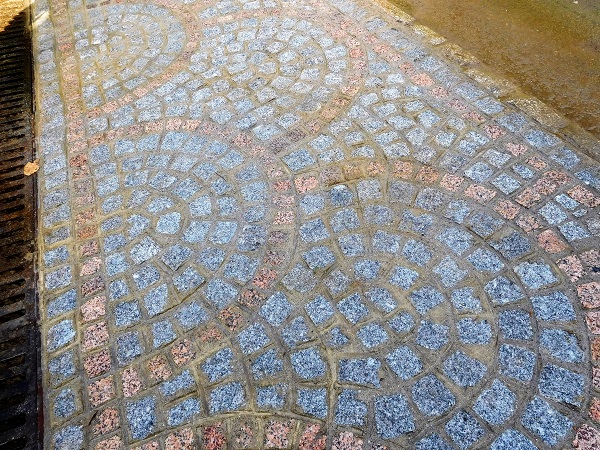
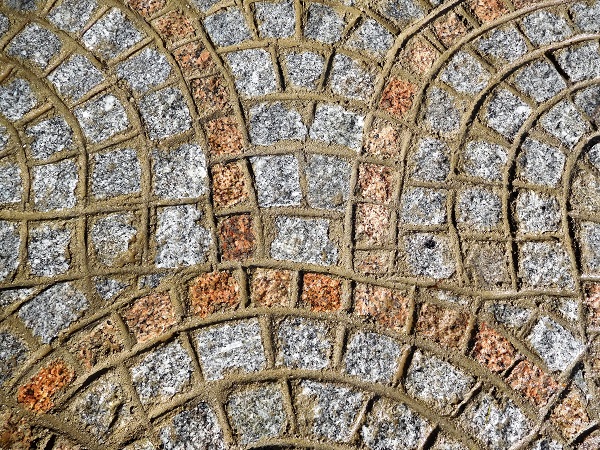
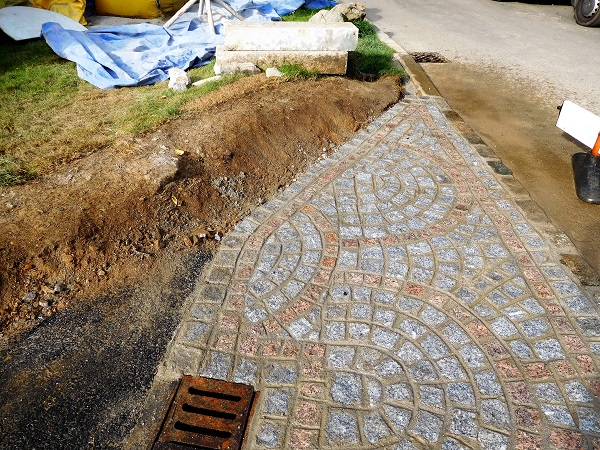
On completion of the apron, we re-instated the grass verge with granite setts and the whole parking area had new tarmac laid.
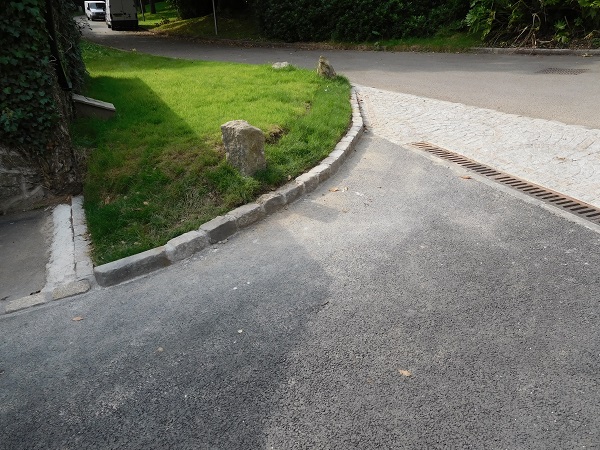
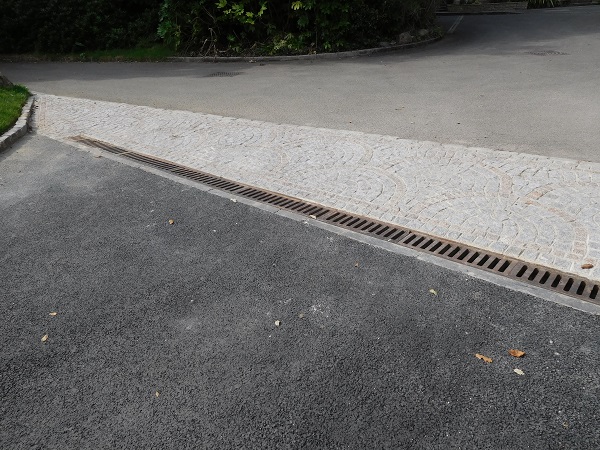
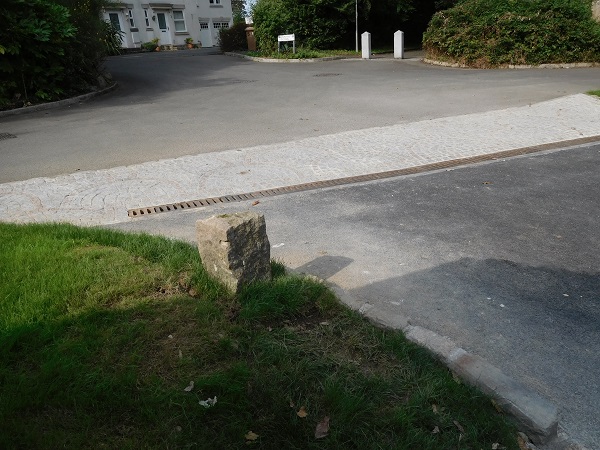
One of the neighbours, whose property adjoined the shared parking area, asked us whilst we were on site if we could paved the entrance to their front door in a similar pattern to match the apron.
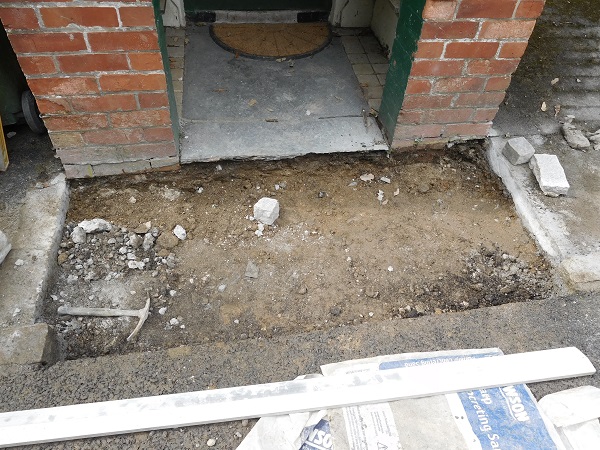
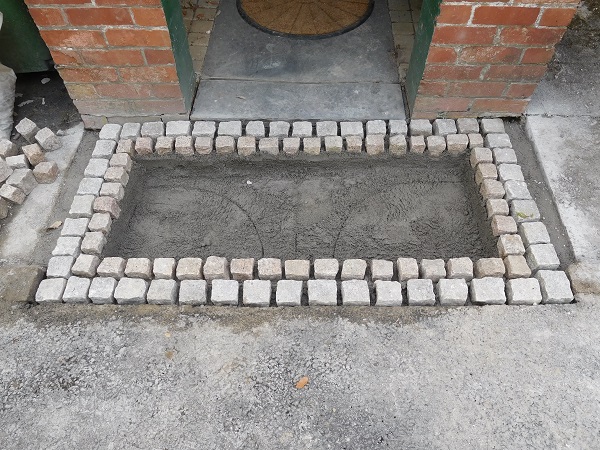
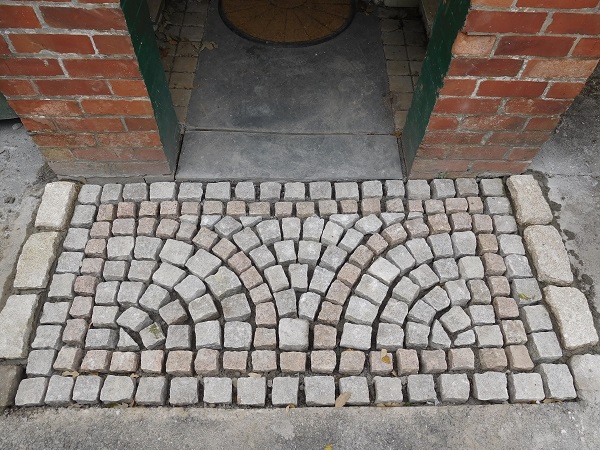
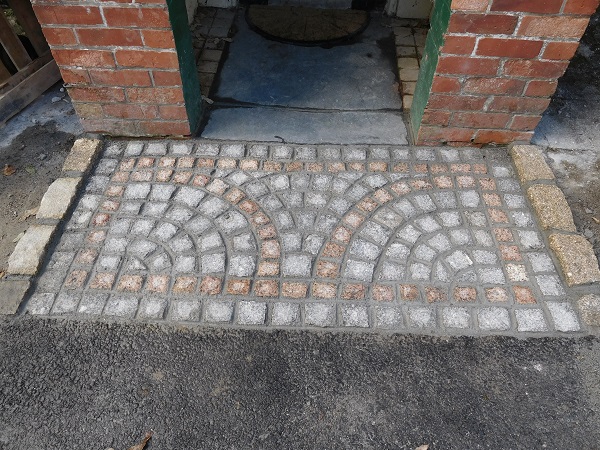
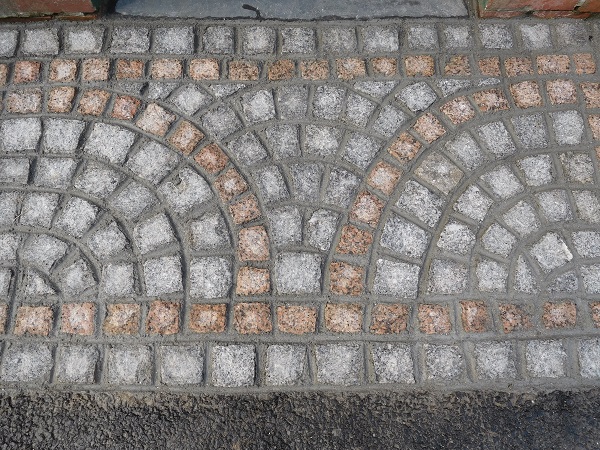
These small setts are perfect for creating intricate mosaic type patterns such as this and being granite they make for a very durable and hard wearing surface that will last for years and years.
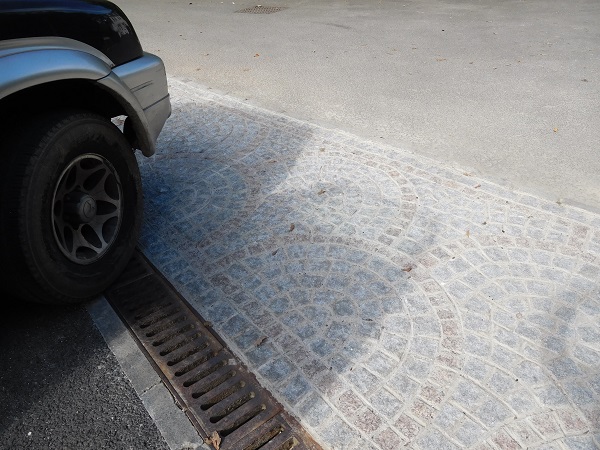
Technically these small granite stones are neither setts or cobbles. They are just called ‘Cubes’ as all three of the dimensional sides are roughly equal. A sett is traditionally equal to two cubes and both setts and cubes are quarried, dressed, shaped to size and supplied as a building product. A cobble on the other hand is neither, these naturally occurring stones are smooth, irregular and round pebble like stones, often sourced from river beds and put into the ground to form a hard wearing surface. Whether they are setts, cubes or cobbles, this type of paving has been around for millennia. Cobblestone roads for instance have a long and rich history, dating back to the Roman Empire where they were used extensively for road construction. The Romans were pioneers in systematic road building, and cobblestones played a crucial role in their vast road network, which spanned over 50,000 miles and some of these roads are still around today. In Europe, cobblestone streets became prominent during the medieval and early modern periods and are often associated with historic preservation today.


